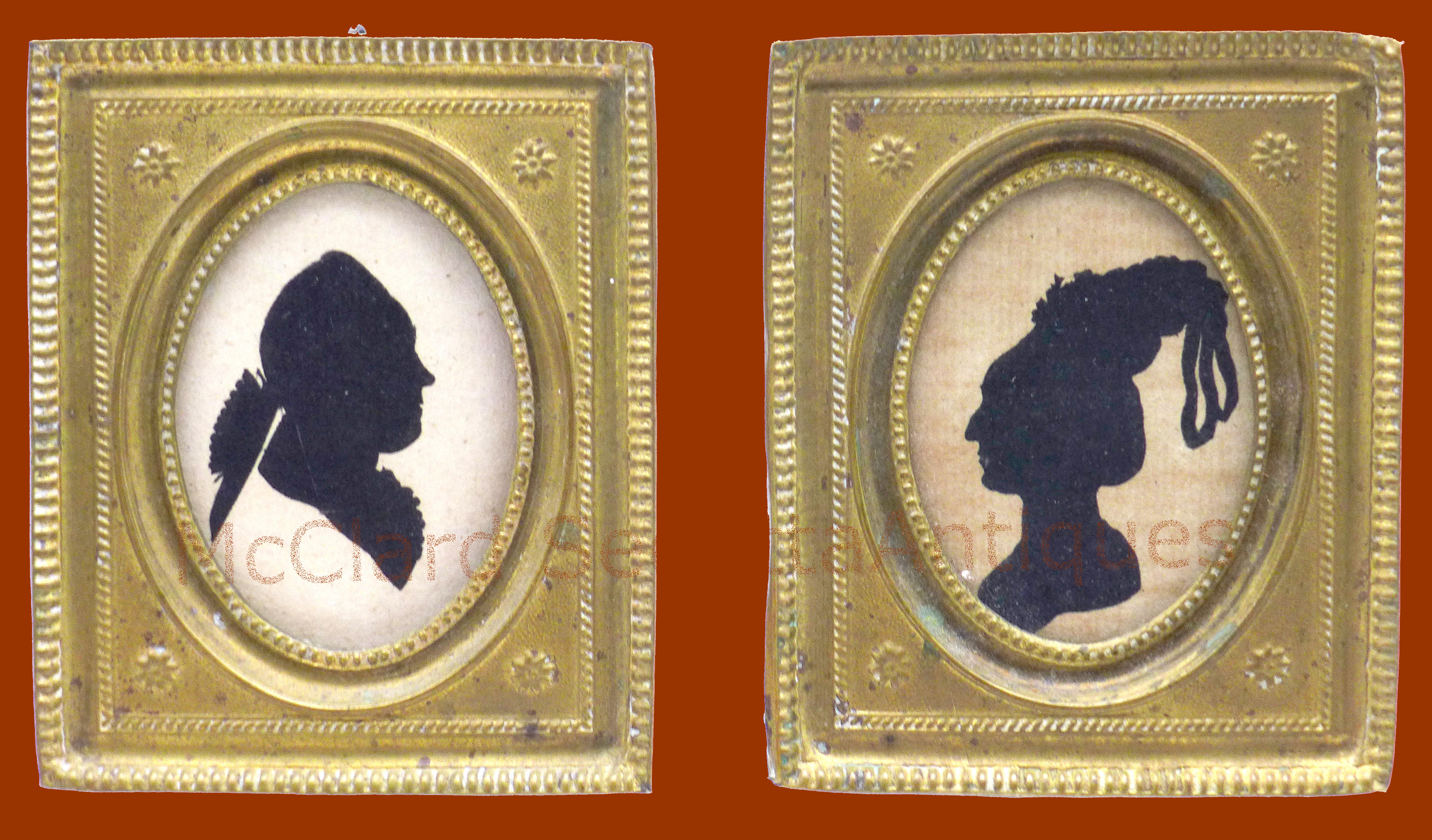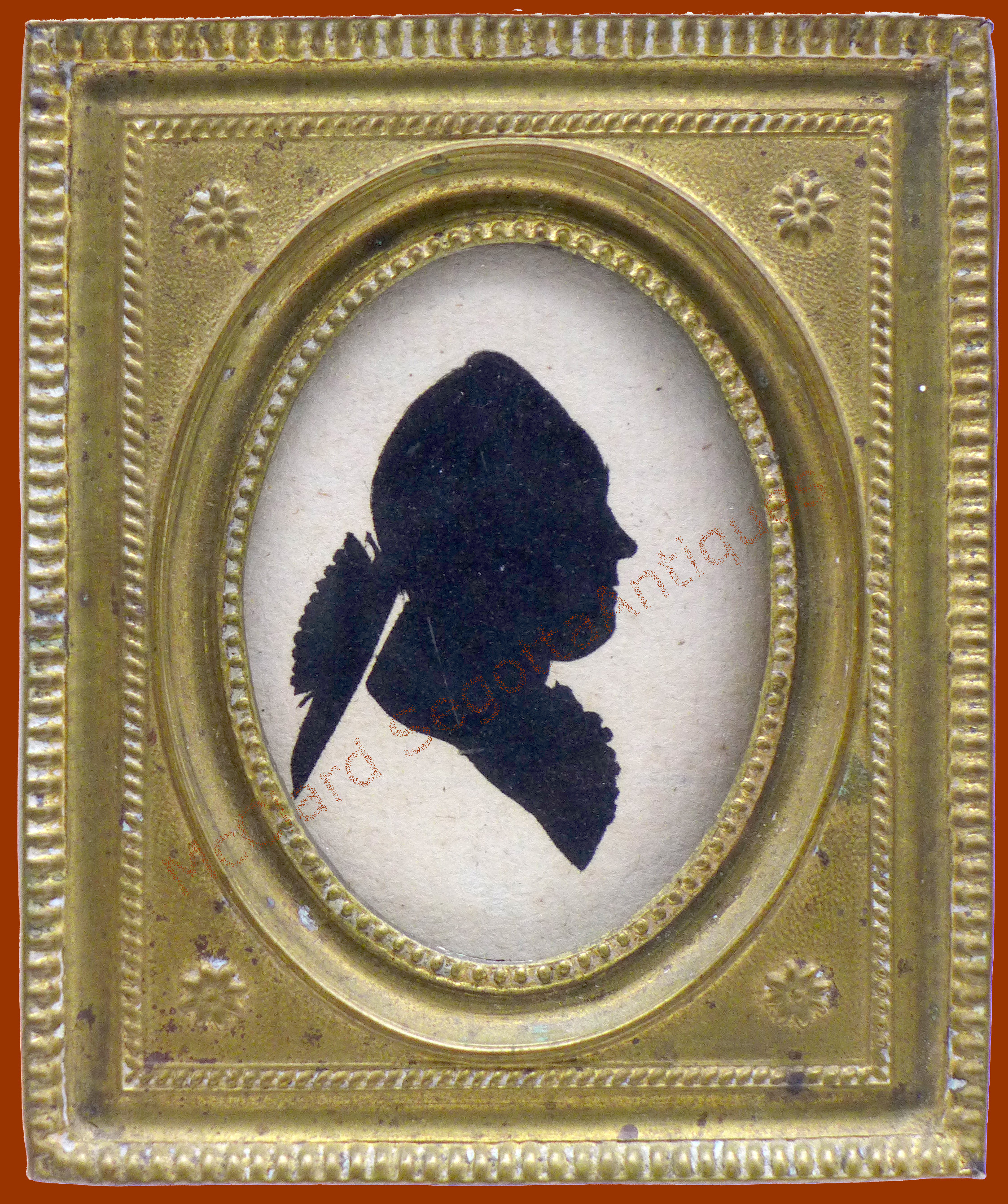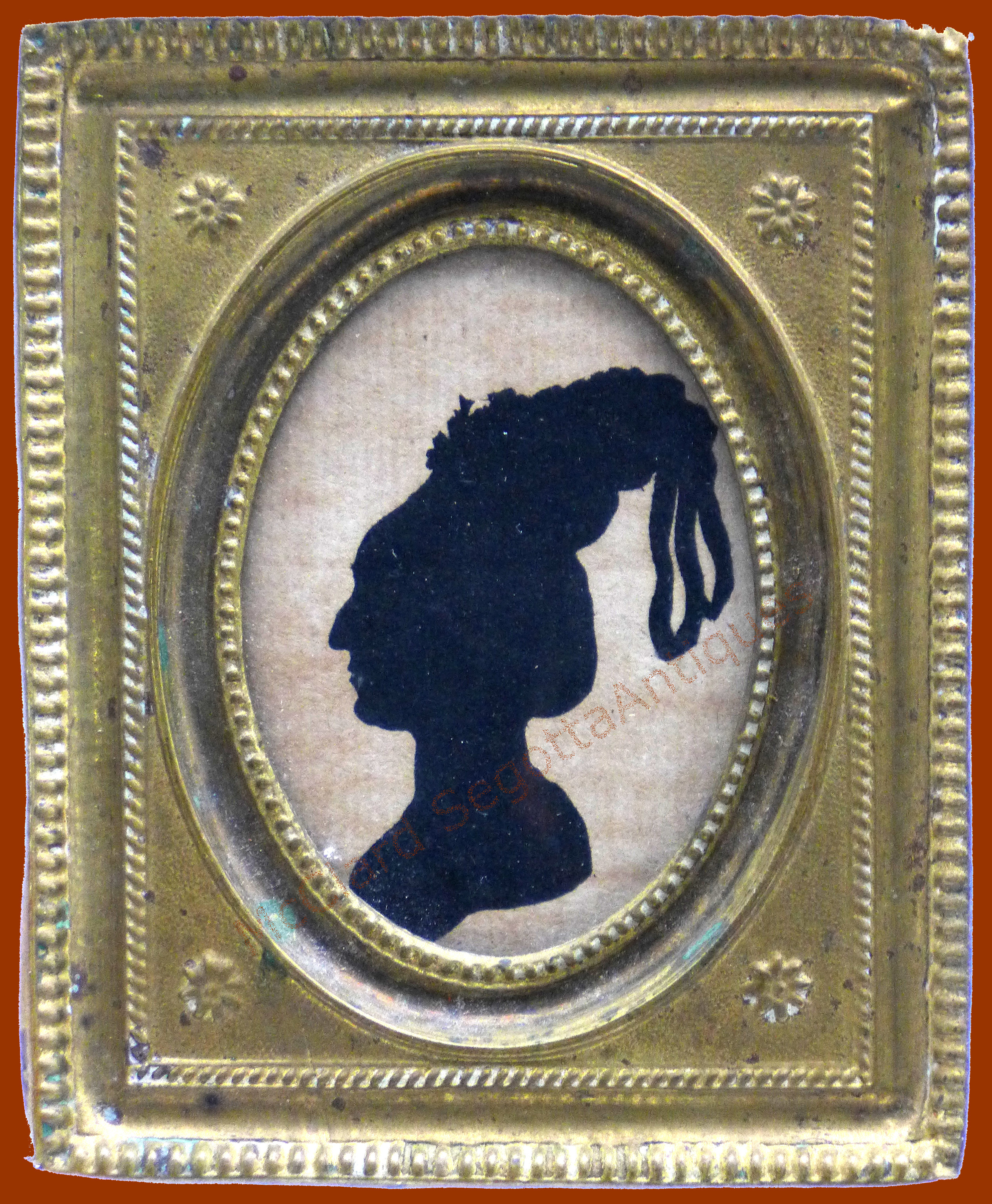
This pair of painted silhouettes (or “shades” as they would have been called in the period) is rare and fascinating. Although the photographs make it appear that the woman was painted on laid paper, a magnified examination has convinced us that the paper of both is wove. Unfortunately, we don’t have a good answer for why the paper appears to be laid. But, looking beyond the paper mystery, we are thrilled to offer this pair of circa 1785 silhouettes. The man wears a “bag wig” which became popular in the 1760s and remained fashionable for 2 decades. McKechnie describes the bag wig as “a dress wig ….. The back hair was enclosed in a black cloth bag, unusually widest at the base, and was tied in the bag at the nap of the neck with a bow, or with a rosette, or occasionally the bag itself was tied with a bow and decorated with a rosette. The bag was drawn together by a running string.” British Silhouette Artists and their Work 1760-1860 at 60. Monssieur wears a coat with a small standing collar and a frilled shirt. Madame wears the back of her hair in a banging chignon—a thick loop of hair covering the nape of the neck and doubled back on itself. The top of her hair really is “the height of fashion” or one might say she went to new heights with her hairstyle! French women achieved enormously tall hairstyles by inserting rolls of wool or horsehair in the middle of wrapped hair (both natural and false hair). Pearls, feathers, ribbons and lace were used to adorn these enormous piles of hair—and no doubt helped hold (or corral) them in place. Sometimes bird’s nests were added as adornment! As you see, Madame has even more hair coming out of the top knot of hair. This hair was likely plaited. Imagine seeing Madame walking towards you with the hanging plaits swinging from side to side as she walked! The fashion styles of both sitters is definitely French, circa 1780. Bear in mind that the English followed the French styles, generally 2 to 5 years later.
We absolutely adore the tiny, stamped brass over wood frames that these profiles reside in. Although we thought that stamped brass frames started being used around 1820, Peggy’s research today shows that hammered or stamped brass over wood frames were used at least as early as 1784. These frames are in excellent condition and we do not believe they are earlier than the second quarter of the 19th century—earlier than the profiles. However, we can rest easy that the frames are entirely appropriate for the 18th century silhouettes inside of them. The frames are only 3” x 3 ¾” with sight sizes of 1 5/8” x 2 ¼”. They are so small, you can fit them anywhere. They are of styles that are so rarely seen your friends will be green with envy.
#6963 Sold


